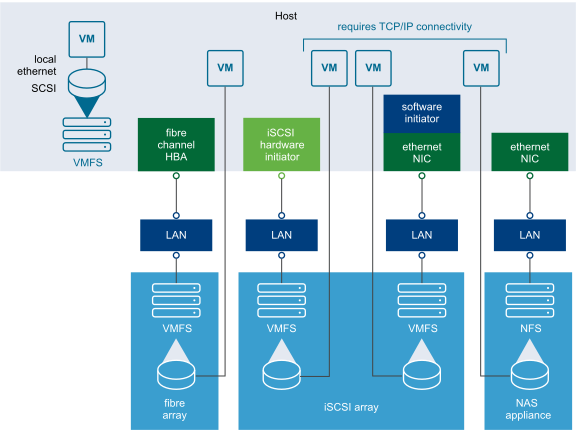A virtual disk hides the physical storage layer from the virtual machine's operating system.
Regardless of the type of storage device that your host uses, the virtual disk always appears to the virtual machine as a mounted SCSI device. As a result, you can run operating systems that are not certified for specific storage equipment, such as SAN, in the virtual machine.
When a virtual machine communicates with its virtual disk stored on a datastore, it issues SCSI commands. Because datastores can exist on various types of physical storage, these commands are encapsulated into other forms, depending on the protocol that the ESXi host uses to connect to a storage device.
Virtual Machines Accessing Different Types of Storage depicts five virtual machines that use different types of storage to illustrate the differences between each type.
You can use vCLI commands to manage the virtual machine file system and storage devices.
■
|
VMFS - Use vmkfstools to create, modify, and manage VMFS virtual disks and raw device mappings. See Managing the Virtual Machine File System with vmkfstools for an introduction and the vSphere Storage documentation for a detailed reference. | ||||||
■
|
Datastores - Several commands allow you to manage datastores and are useful for multiple protocols.
| ||||||
■
|
Storage devices - Several commands manage only specific storage devices.
| ||||||
■
|
Software-defined storage - vSphere supports several types of software-defined storage.
|
